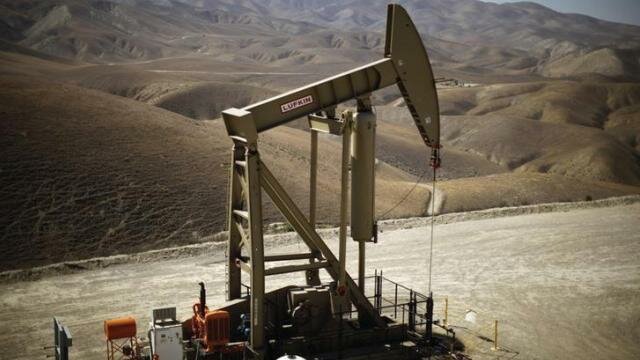
Oil industry in Sudan has passed through different stages, our economic page Business and Finance is to publish a serial of articles about oil in Sudan
, it is an opportunity to follow up the historical background about oil since early time up to the present.
We provide an excellent data to those who desire to invest in oil; our page (Business and Finance) is to review one of the important researches focus on oil.
The research is conducted by Ismail S.H. Ziada under the title (Oil in Sudan) its facts and impacts on Sudanese domestic and international relations, the book comprised of 4 chapters, in the first chapter the researcher assumed historical information about oil industry in Sudan, its production, reserve and the interest of companies, in the second chapter he focused on the role of oil in igniting civil war between South Sudan, we know that oil has affected the future relation between Sudan and the newly born state in 2011.
In chapter three the research talked about the impact of oil on Sudanese US relations since 1972 till 2006, but in the fourth chapter the book reviewed Sudanese Chinese ties and the role of oil which judged the nature of the relations.
The researcher considered that oil is behind the civil war in Sudan urging the conflicted parts to realize peace for the interests of Sudan, South Sudan and the region.
The plans of Chevron could not be implemented as the second civil war erupted in 1983. Chevron suspended its operations in 1984 and entirely ended its 17year long involvement in Sudan by selling its interests to the Sudanese company Concorp in 1992. Concorp sold these concessions on to the Canadian oil corporation ‘State Petroleum Corporation’ a few months. In 1994 Arakis Energy Corporation purchased State Petroleum Corporation and started operating in Sudan. Arakis faced difficulties in securing the needed financing to fulfil its exploration and production agreement with the Sudanese Government. In 1996 it sold 75% of its shares to the China National Petroleum Company (CNPC), PETRONAS (Malaysia) and Sudapet (Sudan) with which it jointly formed the Greater Nile Petroleum Operating Company (GNPOC).
Arakis subsequently sold its 25% share in the GNPOC to the Canadian company Talisman in 1998. The GNPOC made considerable discoveries, increasing the amount of proven reserves in Sudan. It also succeeded in the construction of the pipeline from the Heglig and Unity fields to Port Sudan on the Red Sea. In 1999 the pipeline became operational and carried the first Sudanese oil exports to Port Sudan. In this period and as a result of international public pressure over of being complicit in human rights violations through its operations in Sudan,Talisman sold its shares in the GNPOC to the Indian company Oil and Natural Gas Corporation Limited (ONGC). A consortium made of the French company Total, the American company Marathon, Kuwait Foreign Petroleum Company and the Sudanese company Sudapet was granted a concession in south eastern Sudan (block B) in 1980. The consortium suspended its operations in 1985 as a 6result of the civil war. Unlike Chevron, Total and its partners did not relinquish their concessions as a result of the civil war and they signed an agreement in December 2004 with the Sudanese government to update the contract. As a result of this there is now a dispute between Total and a UK company, White Nile Ltd, who claims that it signed an agreement with the future government of south Sudan for oil exploration in part of the land believed to be within block B and part of the concession of Total and its partners. In 1997, the Sudanese Government granted another concession in the so called block 5A to the Swedish company Lundin with partners PETRONAS, OMV (Austrian oil and Gas Company) and Sudanpet. In 2001 the same consortium was granted a concession over block 5B. In 2003 Lundin sold its interest in block 5A to PETRONAS and OMV sold its interests in Blocks 5A and 5B to the Indian company Oil and Natural Gas Corporation Limited (ONGC). 1.2 Oil reserves and production 1.2.1 Reserves: according to BP statistical review of world energy 2006, Sudan has a proved oil reserve of 6.4 thousand million barrels. The oil exploration has been limited to the central and south central regions. It is estimated that the country holds vast potential reserves in the east, north-west and south of the country.
In 1999 the construction of an export pipeline that connected the Heglig oil fields in central Sudan to Port Sudan on the Red Sea was completed. This led to a considerable increase in oil production, and the first oil export in the history of Sudan. Since then production has increased steadily. In April 2006 another 1400 km pipeline, from Upper Nile in Sudan’s south-east to the eastern Port Sudan became operational. This pipeline will raise production to 500,000 b/d in 2006 and it is estimated that it will double the production in 2007.11 Reuters, “Sudan opens oil pipeline able to pump 500,000 bpd”. Overview of interests of foreign oil companies currently operating in Sudan: China National Petroleum Corporation (CNPC) .CNPC is involved in several projects in Sudan. It has a 40% share in the Greater Nile Petroleum Operating Company (GNPOC), which owns the rights in blocks 1,2 and 4 (Heglig and Unity fields), a 92% interest in block 6. In addition CNPC has a 41% share in the Petrodar Consortium which owns concessions in blocks 3 and 7 and 35% in block 15.
-
Mining Industry of Sudan (1-2)Next >
